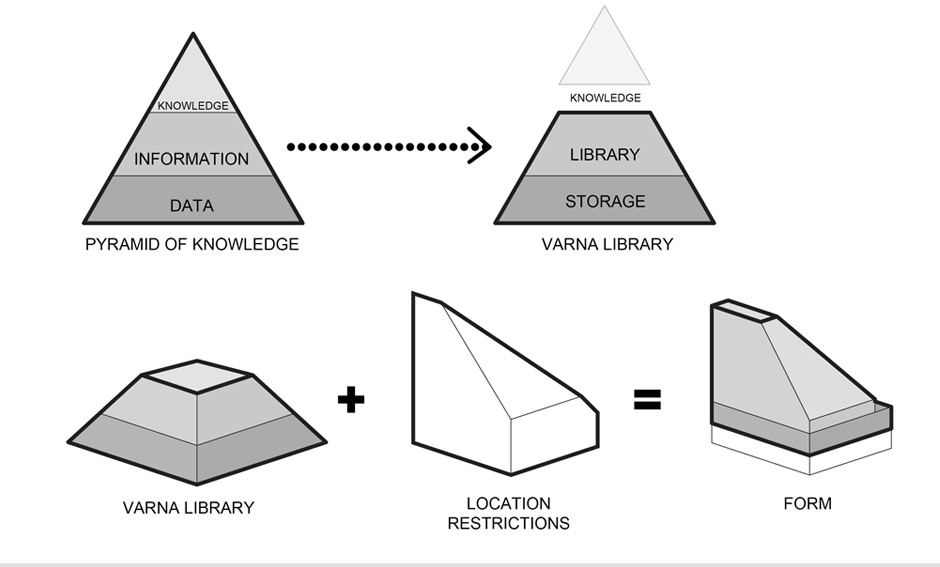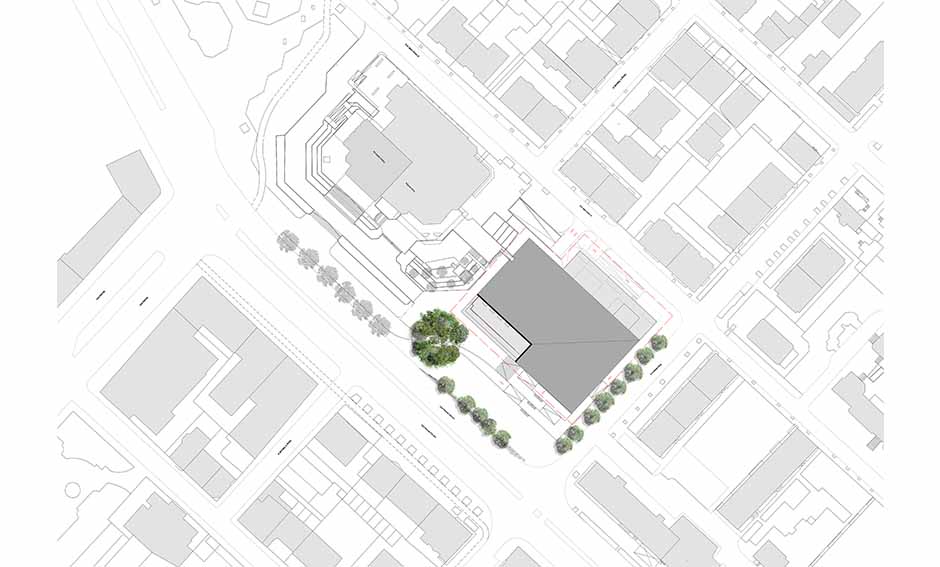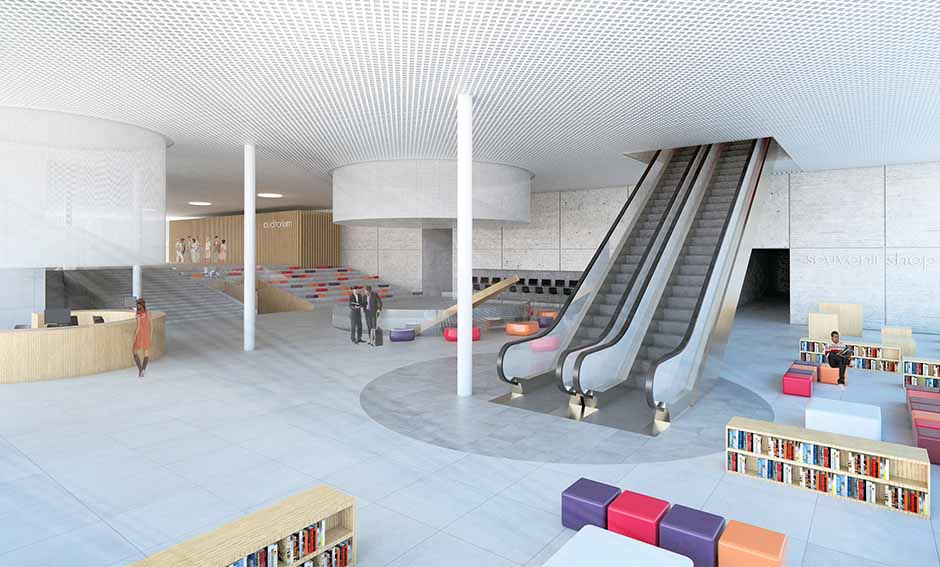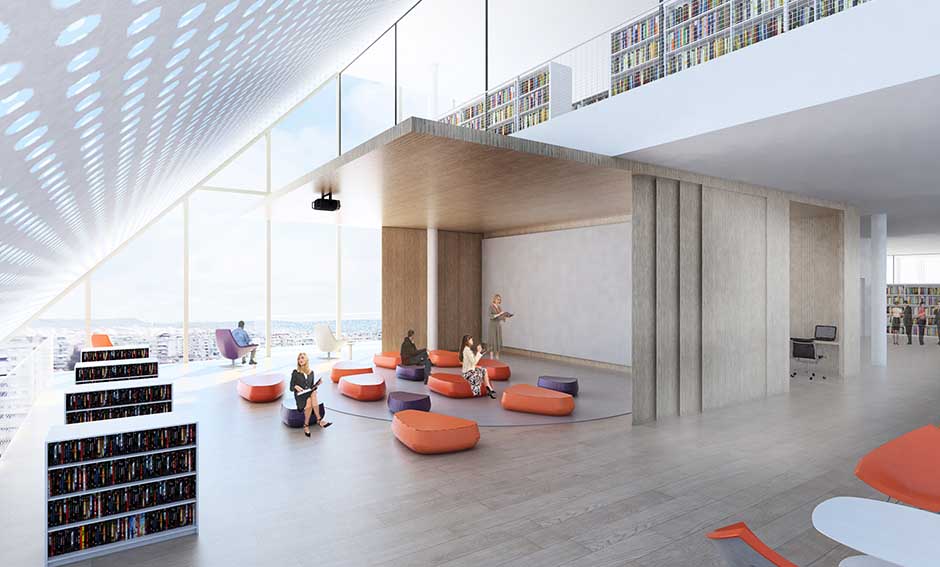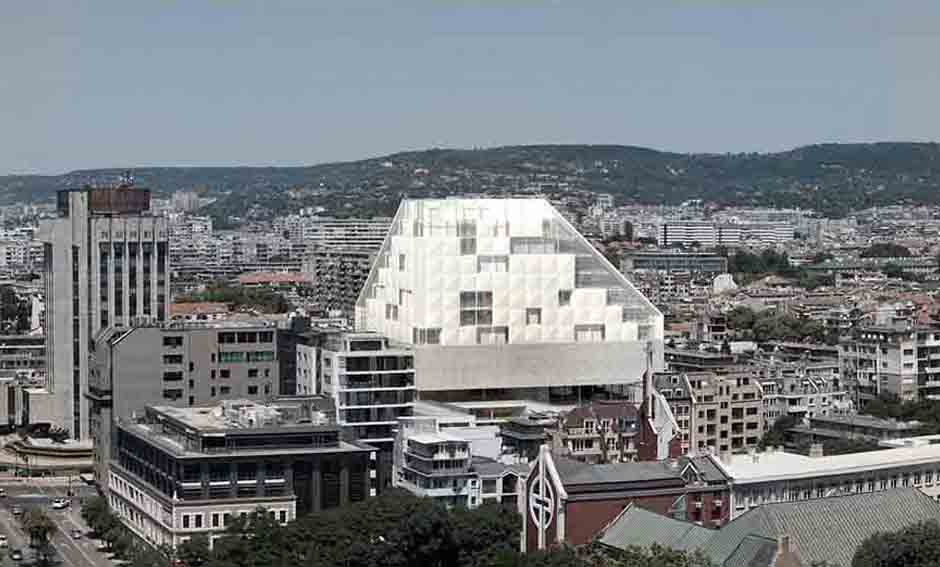PYRAMID OF KNOWLEDGE
- Location: Varna, Bulgaria
- Year: 2015.
- For: Public library , collegium artisticum AWARD for design SARAJEVO 2016.
- Size: Total built-up area of the overground levels: 20 050 m2
- Program:
In approach to designing a library in Varna we started from understanding and defining knowledge as a category that will condition the future shape of the library. Hierarchy of knowledge, or the pyramid of knowledge shows the progress of knowledge acquisition. First point in that pyramid is data gathering, which consists of facts and symbols. When we put data in context, we then have the information. Information is processed data-it makes data usable. Knowledge is interpretation of the information.
The components of the hierarchy of knowledge are: data, information, knowledge and wisdom that make the pyramid of knowledge.
We take the pyramid of knowledge as a motive in defining the form of our future building.
First, data as a basic element. Data can be sound, character, or image and as such, in relation to our building, symbolises public space and extroverte part of the library. That is more relaxed part of building. Gallery, coffee bar, lobby with information desk, amphitheater, etc. That part of the building is open, playful, informal, casual, dynamic-like data within the pyramid of knowledge.
We need to put data in some sort of context to get the information. The informations are in the storage of Varna’s library. It’s a closed monolithic cube that looks like a pedestal, stands firm and keeps the values. Knowledge is on the pedestal.
Knowledge is information put into context. Knowledge is a dynamic process. Knowledge is constantly building. Knowledge is always unfinished. This is a volume which is made up of fragments. The facade is scaffolding on the building which is under construction. Library users are the builders of knowledge. For this reason, users are enabled access to the facade. In this way it is constantly dynamic. Our library is constantly under construction as well as our knowledge.
On the other side there is a protective covering that protects process therefore the constructing and building can take place in the future.
